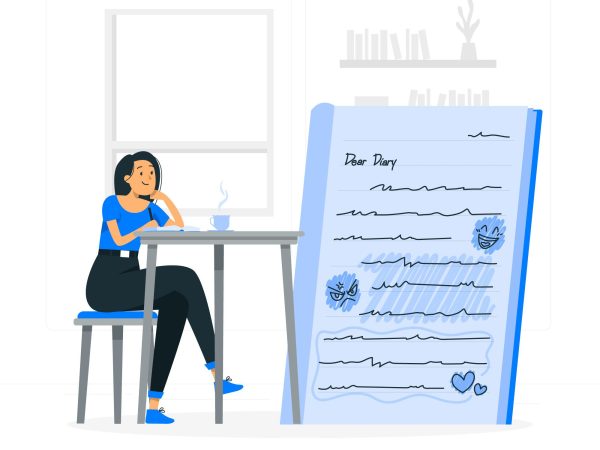Therapy notes are an essential part of professional mental health practice, ensuring accurate record-keeping, ethical compliance, and effective treatment. Mastering the art of writing efficient and accurate therapy notes can significantly enhance the therapeutic process, safeguard practitioners, and improve outcomes for clients. This guide will delve into strategies and tips to optimize your therapy notes while maintaining professionalism and confidentiality.
Why Are Therapy Notes Important?
Therapy notes serve as a legal record, demonstrating adherence to ethical guidelines and clinical standards. In cases of audits, legal inquiries, or peer reviews, comprehensive documentation showcases the practitioner’s diligence.
Accurate notes ensure that therapists can effectively track progress, adjust interventions, and maintain consistency, even if a client transitions to another provider.
Well-documented notes meet billing requirements for insurance companies, helping therapists avoid claim denials or disputes.
Types of Therapy Notes
Progress Notes summarize the client’s progress during a session, including goals achieved, interventions used, and client responses.
Process Notes (Psychotherapy Notes) are personal reflections meant for the therapist’s use only. They include detailed impressions, hypotheses, and ideas for future sessions.
SOAP Notes (Subjective, Objective, Assessment, Plan) are structured for clarity, widely used in healthcare settings to ensure comprehensive documentation.
Key Tips for Efficient Therapy Notes
Start With a Clear Structure
Adopt a standardized format such as SOAP, BIRP (Behavior, Intervention, Response, Plan), or DAP (Data, Assessment, Plan). A structured template reduces decision fatigue and improves efficiency.
Prioritize Conciseness and Clarity
Avoid verbose or overly technical language. Focus on key points, using bullet points or short paragraphs to summarize interventions and outcomes.
Document Immediately After Sessions
Write notes promptly to capture details accurately while they are fresh in your memory. Delaying documentation increases the risk of forgetting essential details.
Use Descriptive Language
Be specific about behaviors, interventions, and outcomes. For example, instead of “Client was upset,” write “Client expressed frustration about workplace conflicts, demonstrated by raised voice and fidgeting.”
Maintain Objectivity
Avoid subjective opinions or biases. Focus on observable behaviors and factual information rather than assumptions or judgments.
Ensure Confidentiality
Protect client privacy by adhering to HIPAA guidelines (or applicable regional regulations). Use encrypted systems for digital notes and secure storage for paper records.
Incorporate Technology
Leverage electronic health record (EHR) systems designed for therapists. These platforms streamline note-taking, appointment scheduling, and billing.
Reflect Progress Toward Goals
Relate each session’s outcomes to the client’s established goals. This highlights progress and ensures alignment with the treatment plan.
Set Time Limits for Note-Taking
Avoid spending excessive time on notes by setting a timer. Allocate 5–10 minutes per session for documentation to balance thoroughness with efficiency.
Regularly Review and Improve
Periodically revisit your notes to refine your style and ensure compliance with evolving standards. Seek peer feedback to identify areas for improvement.
Common Pitfalls to Avoid
Overgeneralization
Avoid vague descriptions like “Client is doing well.” Instead, specify measurable indicators of progress.
Excessive Detail
While thoroughness is essential, irrelevant details can clutter notes and obscure important information.
Lack of Consistency
Inconsistent formats or terminology can create confusion and inefficiency. Stick to a standardized approach.
The Role of Training and Practice
Becoming proficient in therapy note-taking requires practice and continuous learning. Attend workshops, consult industry guidelines, and stay updated on technological advancements to enhance your skills.
The Ethical Dimension
Ethical considerations are paramount in note-taking. Always:
Obtain informed consent for documentation practices.
Avoid including unnecessary sensitive information.
Be mindful of cultural, linguistic, and personal nuances.
Conclusion
Mastering therapy notes is a skill that enhances professionalism, supports effective treatment, and safeguards both clients and therapists. By adopting structured approaches, leveraging technology, and prioritizing clarity, therapists can create documentation that serves its purpose without compromising efficiency. Commit to continuous improvement, and you’ll find that therapy notes become an invaluable tool in your practice.
10 FAQs for Mastering Therapy Notes
What are therapy notes?
Therapy notes are written records of client sessions, documenting progress, interventions, and treatment plans.
Why are therapy notes important?
They ensure treatment continuity, meet legal and ethical standards, and support billing and insurance processes.
What is the difference between progress notes and process notes?
Progress notes are factual and focused on treatment progress, while process notes are personal reflections for the therapist’s use.
What are SOAP notes?
SOAP notes are a structured format for documentation: Subjective, Objective, Assessment, and Plan.
How can I make therapy notes more efficient?
Use standardized templates, write immediately after sessions, and prioritize concise, clear language.
What tools can help with therapy notes?
Electronic health record (EHR) systems streamline note-taking, scheduling, and billing.
How do I ensure confidentiality in therapy notes?
Use encrypted systems, secure storage, and follow HIPAA or other applicable guidelines.
Can therapy notes be used in legal cases?
Yes, they serve as legal documentation of the therapist’s actions and adherence to ethical standards.
What should I avoid when writing therapy notes?
Avoid overgeneralization, excessive detail, and subjective opinions. Stick to factual and relevant information.
How can I improve my therapy note-taking skills?
Attend training sessions, seek peer feedback, and regularly review and refine your documentation process.
Explore insightful articles on NoteNest Blog, where our expert authors share valuable knowledge on productivity, organization, and note-taking strategies to boost efficiency.

